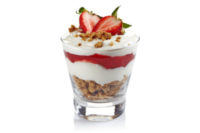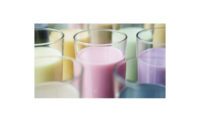By Chr. Hansen
 Chr. Hansen introduces the most stable natural red colors for beverages on the market. No longer should beverage producers accept fading, murky colors in their drinks.
Chr. Hansen introduces the most stable natural red colors for beverages on the market. No longer should beverage producers accept fading, murky colors in their drinks.
Across the international F&B industry beverage producers are struggling with the problem of fading natural colors in their products. Due to stability limitations of the colors used in the products, many beverages start to lose their visual appeal while they are for sale in the supermarket, especially if they are exposed to bright light while on display.
“This is a burning issue for beverage producers as poorly looking products may eventually jeopardize their brand,” says Chr. Hansen’s Ellen Hemme, industry product manager, Natural Colors Division. “In order to avoid this risk producers have had to accept shortened shelf-life of their beverages, high scrapping rates — or the use of costly bottles with an integrated UV filter that can prevent or defer the fading process. Additionally, the fading issue has been causing hesitation among beverage producers who wish to switch from synthetic to natural colors but who fear the fading issue.”
Introducing Ultra Stable Red
“With this industry issue in mind we are very proud to be launching a landmark innovation for red beverages: a range of beautifully bright and intense, vegetable-based colors with outstanding stability,” says Ellen Hemme. “Our new ‘Ultra Stable Red’ solutions are based on new and unique anthocyanin blends combining stabilizing technology. The solutions are ideal for coloring a wide range of beverage applications including carbonated soft drinks, juice-based drinks, sports and energy drinks and vitamin waters.”
Anthocyanins are natural color pigments which are extracted from vegetable sources such as grape skin and black carrot. Despite their wide range of orange-red to violet shades, it is a challenge to maintain the stability of these colors especially in beverage matrixes with high water activity. However, the stability of the Ultra Stable Red solutions in beverages is 30 to 40% better compared to existing anthocyanin colors. This translates into a significant extension of the shelf life of the beverage product as well as cost savings in the entire beverage life cycle due to less scrapping of faded beverages and no expenses for bottles with UV filter.
Dual attractiveness
“The new Ultra Stable Red solutions are attractive for two types of beverage producers,” explains Ellen Hemme. “Firstly, those who are currently using ‘Allura Red’ or ‘Red 40’— one of the ‘Southampton Six’ artificial colors — and who wish to convert to a natural color stable enough for their requirements. Secondly, we expect that beverage producers who are currently using less stable natural color solutions — but who have been searching for a way to maintain a visually appealing red color in the product throughout its shelf life — will also be keen to explore the assets of the Ultra Stable Red solutions. According to GNPD Mintel data, every fifth beverage in a red shade is colored with natural color.”
“We are looking forward to discussing the potential and perspectives of this innovation with beverage producers all over the world,” concludes Ellen Hemme. “Customers will also value the fact that Chr. Hansen has secured the supply of the new Ultra Stable Red colors from day one. Because we control the entire value chain from raw materials to customer delivery we can scale supply up and down according to customer demand.”
SOURCE: Chr. Hansen



